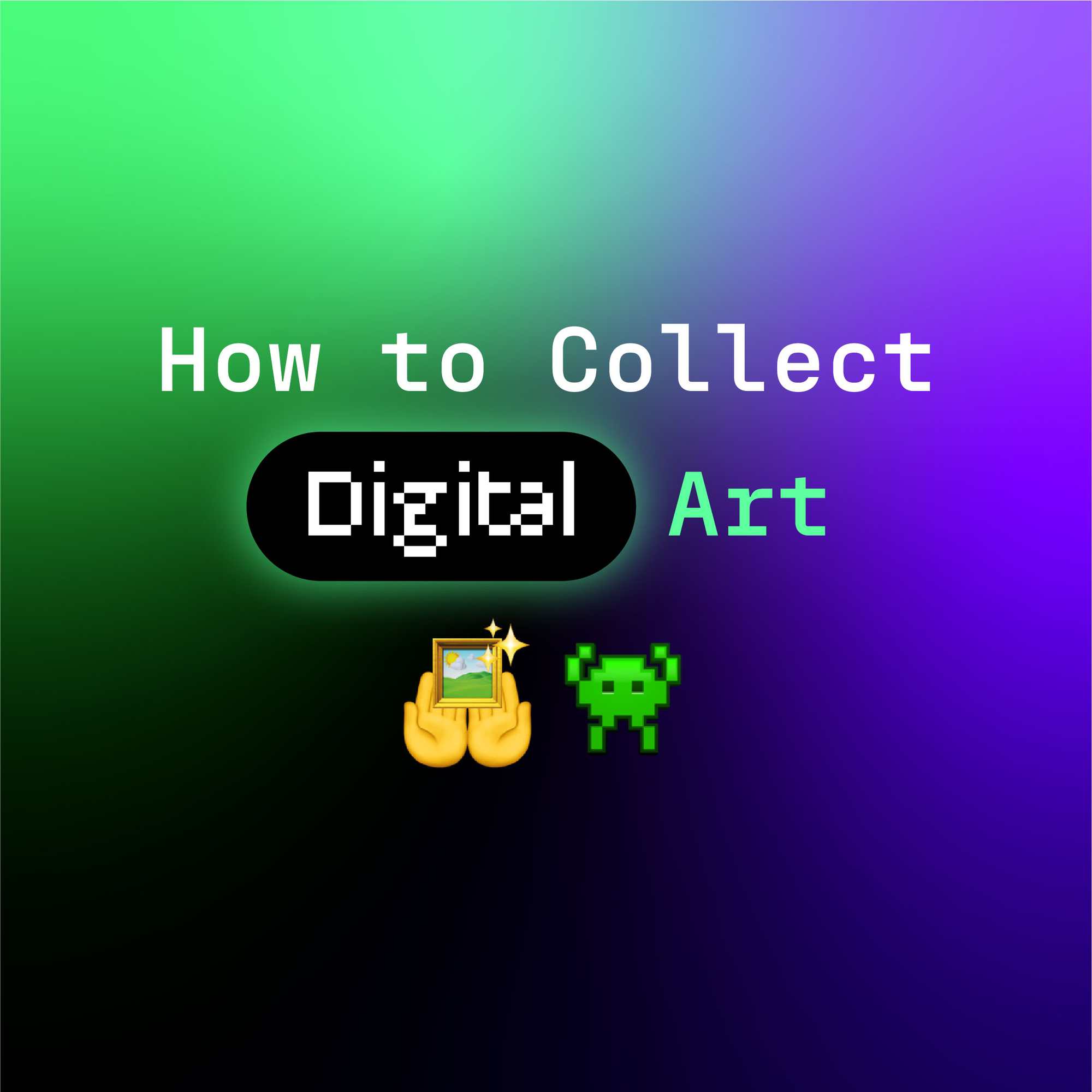How to Collect Digital Art
By Terrain.art | Aug 19 2021 · 5 min read
From understanding the medium of the artwork to some unique features, here are some of the pro tips to keep in mind while collecting this new media art.
Collecting Digital Art
It’s time to think beyond physical art. Over the years, art has successfully escaped the narrow confines of galleries and museums and made its way into hitherto unknown realms. From street art to public installations, from AI art to graphics, creativity now takes many forms. Artists are taking the help of new and emerging technologies to give wings to their creative expressions.
A natural extension of this has been an interest in digital art. The blockchain-backed market is booming with investments skyrocketing by nearly 300% last year. Both serious collectors and first-time buyers are collecting digital art more than ever before.
Experts believe that the Covid-19 pandemic has turned the market upside down. With galleries and museums shut, collectors have been forced to put physical art online. A problem with this is that this does not always look good online, as it was not created for digital presentation. As such, many galleries are now promoting artistic works that are exclusively created for the digital medium. Here are some of the tips to collecting digital art.
How many types of digital artwork are there?
There are different kinds of digital works available in the market: For simplicity’s sake, we have divided them under three different headings: digitally produced works, digitally produced and presented works, and digitally presented works.
In the first category, a digital instrument or a computer device is used to create the artwork, although the final presentation remains physical and often two-dimensional. Digital prints, photographs, graphic prints, etc. fall under this category. Secondly, art can be both digitally produced and displayed. Think of video installation or interactive works. These require a digital device to present the final product to audiences. Finally, we have digitally presented works. This is indeed a rare category, where a digital device may be used to display the final project, but the work is not entirely digitally created. Take Harshit Agrawal’s creations for instance. Agrawal uses digital images to train his AI. The AI-produced images are then bundled together with physical images and presented digitally. This is indeed a novel combination that few artists have yet opted for.
The level of digital involvement vis-à-vis human intervention may also determine the price of an artwork. For works that are entirely digitally produced, prices tend to be lower than those that require a human touch.
Why should you collect digital art?
If you are wondering why you should invest in a work that has no tangible existence, you haven’t been paying attention. In a world that is obsessed with social media, online bragging about artwork is the new big thing. Collectors, investors, and businessmen with deep pockets display their newly acquired digital art NFTs on their social media feed, inviting a rainbow of comments. The more discussion an artwork generates, the more value it acquires. From Banksy’s half-shredded painting acquiring value at Sotheby’s auction to Beeple’s NFT digital work selling for millions – the artworld is replete with examples of how publicity can boost up a work.
There are other reasons as well. Today, almost 10% of all art collectors entirely focus on the digital. Auction houses, galleries and museums are coming up with their own NFT platforms to cash in from the crypto mania. In India too, the trend of buying digital artworks is catching up. Terrain.art is one such online platform, which aims to build an ecosystem around contemporary digital artworks. It not only offers you safe, digital art NFTs, but also offers free educational resources.
How to collect digital artwork?
Collecting a digitally produced artwork is a bit different than buying a physical artwork. While digitally produced analogue works, such as digital prints, photographs etc. are easy to acquire, things get complicated when you are buying, say, a digitally presented artwork. Buying a video installation that can only be seen on certain platforms requires the right tools and technology. Here are some quick tips:
- Be careful of the medium. Internet art is detached from the medium and does not require any special digital equipment. For specific video installations, video and sound equipment may be necessary. There also may be specific guidelines regarding how the artist wants the installation to be put up.
- Since this art may be ephemeral or virtual, it has the advantage of being space-saving by nature and portable. A digital work may be stored and delivered via an external hard drive or an USB stick. But in a world of cloud storage, many sellers offer digital platforms where art can be stored. NFT marketplaces, such as OpenSea, Rarible, SuperRare, and Enjin Marketplace, offer secure platforms where NFT artworks can be viewed, bought, and sold.
- Unlike physical artworks, a digital artwork is a product of the “age of technical reproducibility.” As such, it runs the risk of multiplied infinitely. But with NFT tokens, you can work around this problem. NFTs are digital tokens that make an artwork unique. They have a host of advantages. But from the point of view of a collector, they help in avoiding counterfeit artworks.
- Buying art is one thing. But preserving it for posterity is quite another. Collecting digital art, however, enjoys a distinct advantage in this respect. It requires little maintenance and can be stored virtually. One just needs to be careful about technological upgrades required for displaying and viewing such art.

